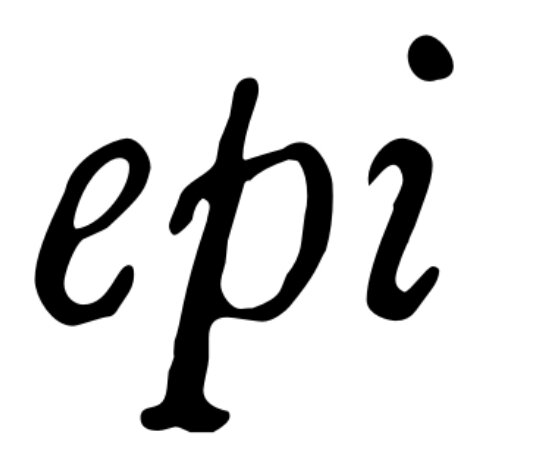On Epi
His early works began to appear in the early 2000’s on walls around central Paris, where he was a student- stencilled quotations taken from those seminal works of the French literary repertoire he was discovering in his studies. Rather than the widespread acclaim and adulation he had hoped for, his efforts earned him near-universal condemnation and opprobrium, not to mention the ire of the Gendarmerie Nationale.
Heavily influenced by the Stencil Movement that had its roots in 1960’s Parisian political protest art, Epi later returned to Britain and adapted his artistic style, eschewing wall for canvas to appropriate and recapitulate tropes from the canon of contemporary art in his own inimitable- and oft-derided- style, fusing multifarious artistic techniques into a strange amalgamation that he likes to term- somewhat loftily- ‘Destructivism’ or- more simplistically- “taking other people’s work and fucking with it.”
At the heart of Epi’s work lies a deeply-held disdain for the gaggle of preening narcissists and arrivistes that loosely constitutes the traditional contemporary art establishment- whose ignorance, pretentiousness and capriciousness he has long found abhorrent- along with an unwavering desire to subvert the very métier he is so desperate to forge a career in.
So far his efforts have, for some inexplicable reason, found popularity amongst a host of esteemed and celebrated contemporary art collectors, or so Epi keeps insisting. Rumours have circulated that Larry Gagosian owns two of Epi’s works, but these are most likely apocryphal, if not complete fabrications put about by Epi himself in a sad and pathetic attempt to garner interest in his work.
Whilst at first glance Epi’s work may appear superficially low brow and juvenile, he repeatedly insists that he is actually engaged in a highly nuanced intellectual game of call and response- akin to Bertolt Brecht’s practice of ‘Dramatic Alienation’- with the entire canon of contemporary art itself. By reducing to absurdity familiar and beloved contemporary works, artistic tropes, and their progenitors- that are, in Epi’s view, inherently facile and pointless but are still lauded as valuable and significant by an art crowd he views as capricious and philistinic- he hopes to expose and erode the pretensions of those would would posit contemporary art as anything more than the overhyped and often-meaningless drivel that in reality it probably is.
It is that singular credo that Epi believes bestows value upon his work: not only do his works require a comparable level of technical ability to replicate the original works they intend to satirize, but a further level of conceptual depth and satirical meaning must be conceived of and worked into the piece in a way that subtly elucidates the shortcomings of the original itself. His works mimic others, and then- to Epi’s mind at least- intellectually supersede them. Many, however, strongly disagree with his own assessment of his work.
Rather than working as an artist, Epi’s approach is rather an academic and conceptual one, casting him primarily as an art critic who happens to make art; a subversion of established creative practice that he believes serves to expose the collective delusion under which such large swathes of the art market labour.
Epi endeavours to bring his work into the reach of a broad base of art buyers- tiering the primary pricing structure for his open and limited edition prints, as well as original canvases, according to his own assessment of each piece’s individual brilliance and ingenuity, so that people on every rung of the socioeconomic ladder can afford a piece of his work. This benevolent approach to selling his work, however, will undoubtedly change when his art starts going for really serious money, whereupon he will tell his loyal collectors to fuck off, start selling his works exclusively to a small coterie of ultra-rich philistines, and piss it up around the Med on his yacht.
Epi now lives in Bath. He hopes that one day, long after his death, he will finally get the recognition he doesn’t deserve.
